What Kind Of Anesthesia Is Used For Face Lift?
Type of anesthesia depends on the type of facelift and your general health
The term “facelift” used generally, has many different degrees of surgical intervention. A lift that is treating only the skin and superficial fat and tissue, with generally smaller incisions may be reasonably performed with local anesthetic and sedation.
In the interest of safety, which should be everyone’s primary concern, the sedation should be delivered by an appropriate anesthesia provider. In contrast a more complete facelift, one that addresses the entire facial anatomy and repositions or tightens underlying facial muscles as well as deeper tissues, replaces or repositions fat and requires more complete incisions may be better performed under deeper sedation or a general anesthetic.

A Facelift Can Be Performed With Intravenous Sedation
Age is not a factor that generally influences the safety of anesthesia, it is moreover your general health.
If you are a smoker, a diabetic or have cardiovascular problems, or other significant medical problems, it is important to have health clearance from your primary physician and also have a pre-surgical consult with the anesthesia provider and your surgeon to disclose all the risks your health conditions may place on not only your health during surgery, but also your ability to heal properly.

A Facelift Or A Neck Lift Can Be Performed Under A General Anaesthetic
General anesthesia is safe
A general anesthetic performed by a Board Certified physician anesthesiologist is safe and effective for the proper performance of a facelift. A well done facelift takes time and some patients are better off asleep for this.
This is also true if they have an anxious personality and are difficult to sedate. Also realize that there are non-plastic surgeons doing facelifts out there and they typically can’t get a physician anesthesiologist to work with them because this is beyond their proper scope of training.
They will sell you on a local anesthetic because that is all they can offer but tell you it is because it is “safer.” Be careful about this!. (Richard P. Rand, MD, FACS, Seattle Plastic Surgeon)
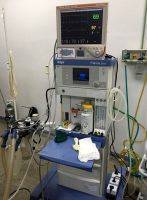
A Light Form Of Anaesthesia Is Sufficien
While age is a factor, the real key is your health regarding the type of anesthesia. If you are medically cleared by your primary care doctor then you can either form of anesthesia. It is very common to have a Facelift using IV sedation.
Some doctors feel that there is less post operative nausea using IV sedation vs. a general anesthetic. Some of this may be related to medication sensitivity. A general anesthetic usually requires an anesthesiologist so your cost may be higher via the general anesthetic pathway.
However, for patients that are very anxious, this additional cost may provide peace of mind = well worth it!! So, after the health issues are put aside, it’s you choice. (Michael Kulick, MD, DDS, San Francisco Plastic Surgeon)

A Mini Facelift, MACS Facelift Can Be Performed Under A Local Anaesthetic
Anesthesia choices
I have used both General Anesthesia as well as Monitored Anesthesia Care with excellent results.
There are advantages and disadvantages to both techniques, depending on the surgeon or patient’s perspective: The presence of either a Laryngeal Mask or Endotracheal tube ensures a secure airway for delivery of oxygen, however its placement and removal can cause a sore throat, or in the worst scenario a chipped tooth.
For patients who have heavy necks, management of the airway is a shared responsibility between the surgeon and anesthesia provider. I personally prefer not to have to struggle with it, however I always defer to patient’s requests.
My cosmetic (including facelift) patients have been very well served by having their Monitored Anesthesia Care supervised by Board Certified Anesthesiologists who provide a specialized Intravenous “cocktail” of medications which produce a light hypnotic state, safeguard against post-op nausea and vomiting and are easily reversible.

General Anaesthetic Is A Form Of Anaesthesia In Which The Patient Is Completely Anaesthetised,
Our patients wake up gently, without excessive “hangover”, which facilitates their recovery. Do recall that in all projects, you should ideally have options, so be your own best advocate and discuss this with your surgeon. (Lavinia K. Chong, MD, Orange County Plastic Surgeon)
It depends on the person and current situation
Face lifts can be done under local anesthesia and general anesthesia. It really depends on the person and how they can handle being slightly awake or not during the procedure. Also, a particular person’s pain tolerance plays a major part.
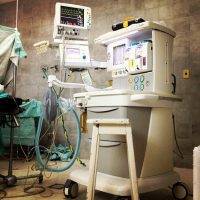
General Anaesthetic
Sometimes, cooperation by the patient during the procedure can help facilitate the surgeon’s efforts. When there is a painful part, the anesthesiologist or nurse anesthetist can make the person sleepier so they can tolerate that particular part.
Also, IV sedation creates amnesia for the patient so that they don’t remember the events as well.
Some people can tolerate local anesthesia with oral sedation using valium. But the patient really has to be able to tolerate the injections and some of the discomfort when you do the pulling of the tissues.
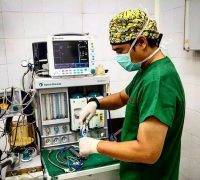
Intravenous Sedation Makes Surgery Safer
General anesthesia is also another option; the risks are little more with this option, but you are totally out during the procedure. This is preferable for some people. They will not know anything during the procedure which some people really desire.
Patient cooperation is limited so working under the chin can be more challenging for the surgeon. (Philip Young, MD, Bellevue Facial Plastic Surgeon)
Sedation and general anesthesia both safe if done on a healthy person

Intravenous Sedation
Choose the best anesthetic for you
Your choice of anesthetic depends on several factors:
Extent of the procedure
If your procedure is more than 2 hours, sitting still for that long is a long time
There are other factors that contribute to your “real age” as opposed to your chronological age.
We have criteria by which we rate an individuals risk of undergoing general anesthesia (Called ASA class). You surgeon can discuss this with you. Your tolerance level Depending on your ability to tolerate facial injections, local anesthesia may be a good alternative for you.
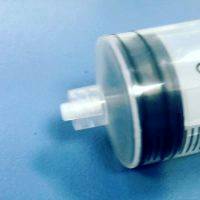
Local Anaesthetic
Anesthesia during a facelift
During a facelift you can use local anesthesia with sedation, or you can also use local with general. The literature says that general anesthesia is safer. Nonetheless, the final anesthesia decision is made between you, and the anesthesiologist and the plastic surgeon.
Just make sure you choose a certified plastic surgeon, who operates in an accredited facility. (Alberto Arguello, MD, Costa Rica Plastic Surgeon)
Facelift anesthesia
While it is technically possible to perform a facelift under local anesthetic plus sedation, I would not advise it for my patients. As a surgeon, the safest option which allows me to remain completely focused on the surgery itself is having a board-certified anesthesiologist administer a general anesthetic.

Management Of Anesthesia
Anesthesia and facelift
I recommend general anesthesia for facelift procedures. A mini-facelift can be safely done under sedation as well. Remember, comfort is your friend. (Jose E. Barrera, MD, FACS, San Antonio Facial Plastic Surgeon)
Local vs sedation for a facelift
Physicians have been performing facelifts under both local and general anesthesia for years. Having the procedure performed under local has both positives and negatives. The main negative is you are awake and you will know what is going on during your procedure.
Typically local sedation can save a significant amount of money if both you and your surgeon agree you are a good candidate for local. General anesthesia is also a very safe way to have this procedure performed, especially of you are adding other procedures at the same time.
In our practice we do about 50% of patients asleep an 50% of patients awake under local. (Christopher T. Maloney Jr., MD, Tucson Plastic Surgeon)
Most facelifts require anywhere between 2-4 hours of operative time with frequent turning of the head and manipulation of the jawline.
I have found that this can be quite uncomfortable under local anesthesia. In order to attain long lasting and aesthetically pleasing results, I like to perform my facelifts with some sort of sedation.
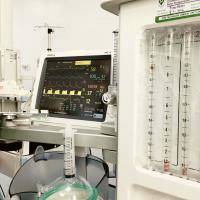
The Difference Between Iv And General Sedation
Extent of Neck Rejuvenation dictates Extent of Anesthesia
For facelift surgery in Houston, TX, I offer a wide variety of facelift procedures. I believe in an individualized approach to facial rejuvenation. Based on my recommended procedure, I will give the patient options to anesthesia that allow for a safe procedure with minimal risk and downtime.
Typically, the more neck correction that is necessary, the more anesthesia I recommend. if a patient needs significant correction of excess neck skin and platysmal banding, I will recommend general anesthesia. If the patient has mild to moderate jowling and malar fat pad ptosis, I will recommend a local anesthetic or IV sedation.

Types Of Anesthesia Used In Cosmetic Surgery
Facelift with local/sedation or general anesthesia
The anesthesia used for facelift can be local with sedation or general. Please know that there is a rainbow-like spectrum of anesthetic ‘depth’ between these two. Some surgeons perform ‘twilight’ anesthesia that is in some cases as deep as a general anesthetic.
In some cases, a ‘light’ general anesthetic without any inhaled anesthetic can have a quicker, less drowsy recovery than an iv/sedation anesthetic. It all depends on the anesthetist’s experience and repertoire.
Furthermore, risks of so-called ‘twilight’ anesthesia are not trivial and probably not much different than that of ‘general’ in otherwise healthy patients.

You May Be Opposed To A General Anaesthetic Because Of The Unpleasant Sensation Afterwards
A Face Lift without General Anesthesia is better
A face lift can be performed with a sedative or twilight anesthesia that is not general anesthesia. It is usually administered with an IV and you are not aware of anything during the surgery, no pain, no discomfort.
This avoids you having to be under general anesthesia, there is less bleeding and bruising, and you will not wake up feeling nauseous and ill. A skilled anesthesiologist who performs twilight anesthesia is most important. (Andrew Jacono, MD, Great Neck Facial Plastic Surgeon)
Anesthesia for Facelift Procedures
I would not suggest having a full facelift procedure under local. In my practice my preferred anesthetic is IV sedation (not general) with Local infiltration monitored by board certified anesthesiologist. (Vivian Hernandez, MD, FACS, Boca Raton Plastic Surgeon)
Anesthesia for a facelift can be sedation or general. It really depends upon your comfort level and your health. I just want the patient to be comfortable so that I can provide the best result for them. (Steven Wallach, MD, New York Plastic Surgeon)
Facelifts can be done under a variety of anesthetics
Facelifts can be done under a variety of anesthetics. Depending on the extent of your facelift, it can be done under local, iv sedation or general anesthesia. If you are in otherwise good health, the risk from anesthesia at an accredited center where they use either anesthesiologists or supervised nurse anesthetists is extraordinarily low.
Generally speaking facelifts are not a type of procedure that keeps you from moving around after surgery like breast augmentation or abdominoplasty surgery. These can create fluid shifts that make the risk of anesthesia greater.
A facelift procedure does not have that type of effect and if you are healthy, anesthesia assisted facelifts are much more comfortable and will rely on no pain during the procedure. (Scott Trimas, MD, Jacksonville Facial Plastic Surgeon)
The is the preference of the patient and the surgeon. Here’s my take on this. A facelift usually takes several hours to complete. Operating rooms are like a second home to us but are very foreign and often unsettling for patients.
In addition people are taking and there sounds and smells, from cautery, that definitely do not put patients at ease. Today, anesthesia is very safe and with the new LMA tubes the patient doesn’t have to be on a ventilator.
Meaning the tube sits in the back of the throat and the patient breathes on their own the whole time. This is much better than the older ventilator tubes. So I prefer patients to be under general anesthesia in a hospital and not a surgery center. (Christopher L. Hess, MD, Fairfax Plastic Surgeon)
